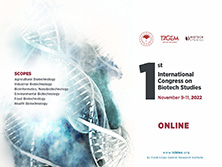Biotech Studies
2015, Vol 24, Num, 2 (Pages: 150-156)
Use of Quinoa in Bakery Products
2 Tarla Bitkileri Merkez Araştırma Enstitüsü Müdürlüğü, Ankara - Quinoa (Chenopodium quinoaWilld.) originated in the Andean region in South America has been cultivated in many places like Argentina, Chile, Bolivia, Peru, Ecuador and Colombia. After the American continent, it began to be grown in Europe and Asia continents. The quinoa has genetic diversity and also capability of high adaptability. In recent years, it has begun to be known and consumed in our country. Food and Agriculture Organization of the United Nations (FAO) has declared the year 2013 as the ``International Year of Quinoa`. It contains approximately 10 - 18 % protein, 4.50 - 8.75 % fat, 54.1 - 64.2 % carbohydrates, 2.40 - 3.65 % ash and 2.1 - 4.9 % fiber depending on variety. Also, it is a good nutritional source of vitamin E, group of vitamin B, amino acid of lysine and essential fatty acids. Therefore, adding quiona to wheat flour improves the nutritional value of the products obtained. However, in the composition of quinoa, presence of saponins causing bitter taste and lack of wheat gluten proteins are limiting the use it in bakery products. After removing saponins, which are found on the outer layer, quinoa can blend to wheat flour in certain proportions on production of bakery products like bread, cakes, biscuits taking into account characteristics such as taste, aroma, texture appearance with the aim of enriching. Besides, quinoa can be used as a starch source at bread making for celiac patients. In this paper, it is aimed to give information about the use of quinoa at various bakery products. Keywords : Quinoa, bread, cake, cookie
















